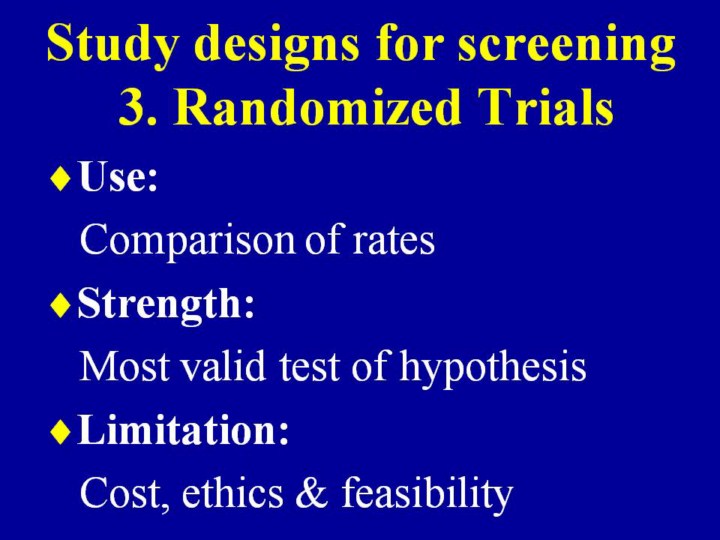 |
Since non-comparability of screened and non-screened individuals is the main
threat to the validity, randomized trial is the optimal assessment for
screening programs. Randomization controls potential confounders when the
sample size is sufficiently large. Self-selection bias is also controlled as
individuals are allocated to either group at random after they have agreed
to participate in the trial. Lead time bias can be taken in account by
adjusting for the average lead time when comparing screening versus symptom-
detected individuals or preferably by comparing age-specific mortality rates
for both groups. Trials can also control the length bias by comparing the
mortality experience of the groups after repeated screening. While
randomized trials can provide the best and most valid evidence concerning
the efficacy of a screening program, their use is limited because of the
problems of costs, ethics and feasibility and most evidence on the effects
of screening programs come from nonexperimental study designs.
|
